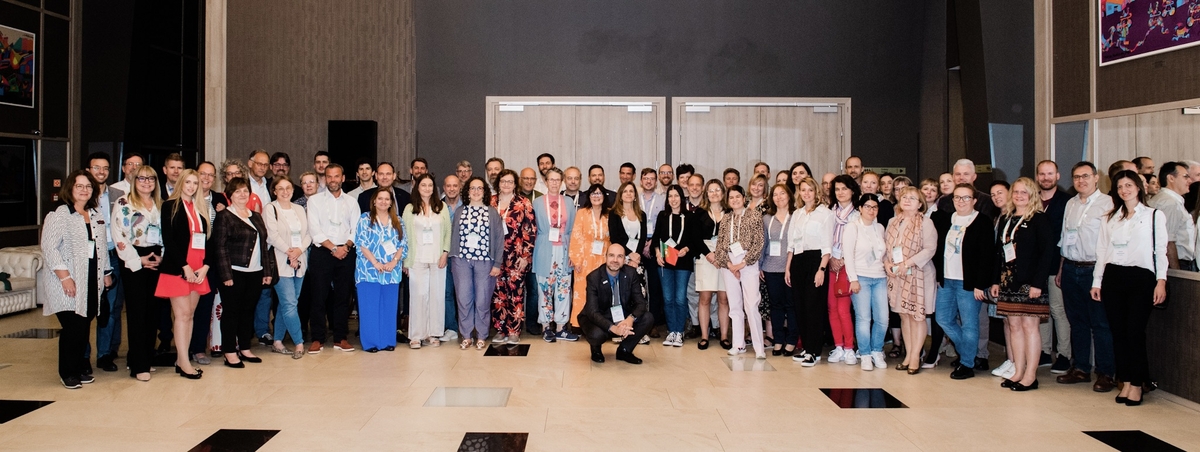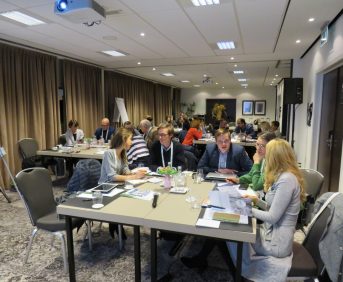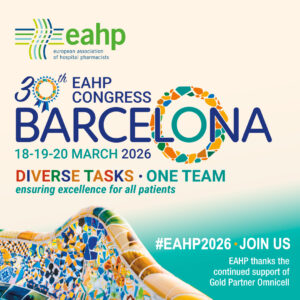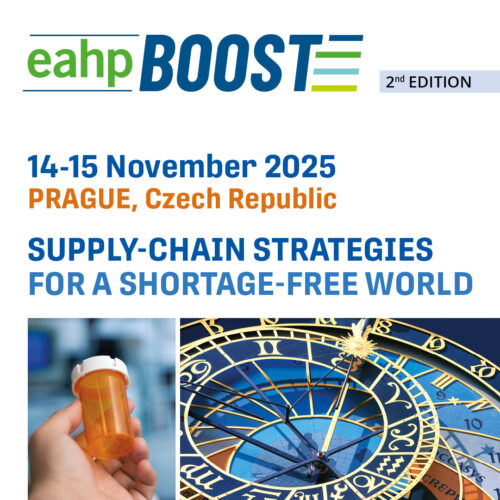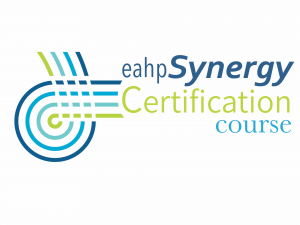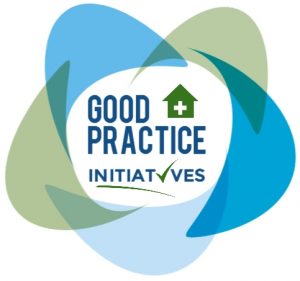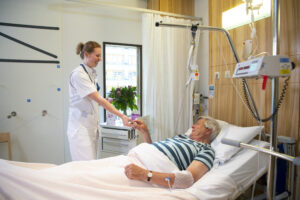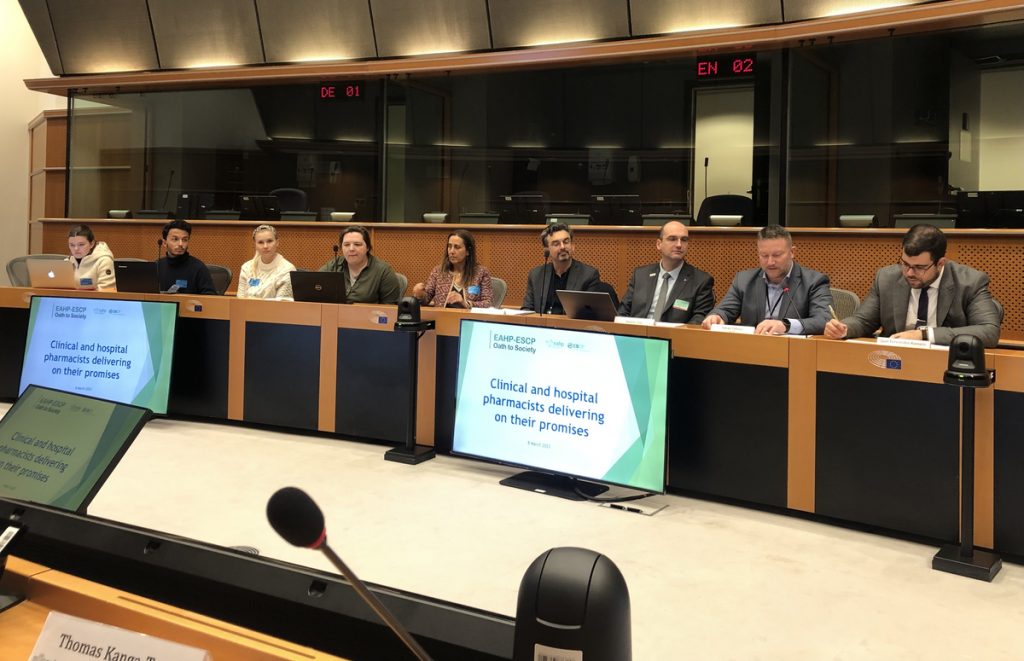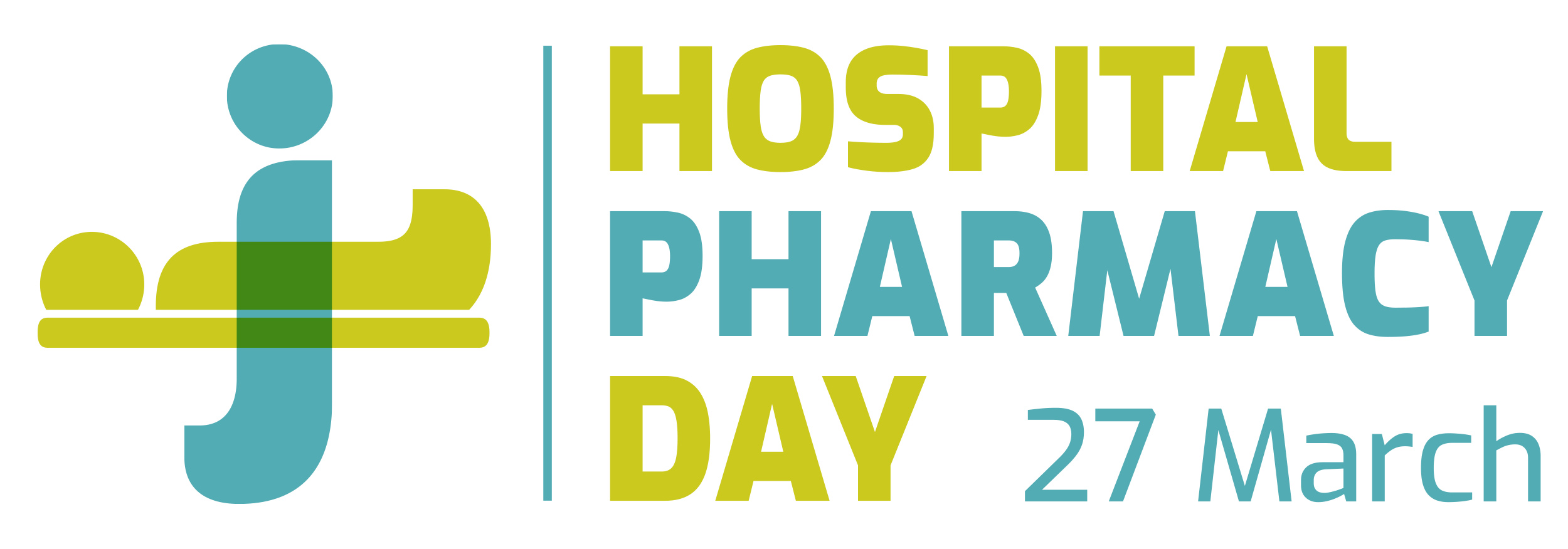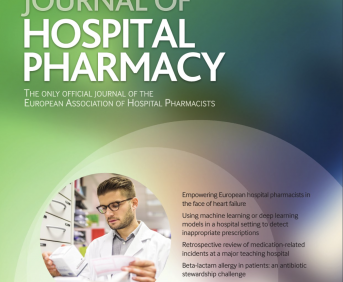CIRCUIT FOR THE PREPARATION, CONTROL, AND DISPENSATION OF AUTOLOGOUS SERUM EYE DROPS IN A PHARMACY SERVICE
Pdf

European Statement
Production and Compounding
Author(s)
Eva Gómez-Costa; María Begoña Feal-Cortizas; María Mateos-Salvador; Sandra Rotea-Salvo; Andrea Luaces-Rodríguez; Laura Caeiro-Martínez; Clara Fernández-Diz; Andrés Torres-Pérez; Luis Margusino-Framiñán; María Isabel Martín-Herranz
Why was it done?
Implement a circuit for the preparation, microbiological control, analytical control of patients, and dispensation of autologous serum eye drops in the Pharmacy Service (PS) of a tertiary-level hospital.
What was done?
Autologous serum eye drops are classified as a special medication that must be prepared in authorized centers with an up-to-date patient registry. This initiative aims to ensure the safe use of autologous serum eye drops, guaranteeing quality and safety in their preparation and administration.
How was it done?
The circuit was established in the PS in 2015. After prescription by the Ophthalmology Service, pharmaceutical validation confirms that the treatment is optimal and complies with regulatory requirements. Blood samples are collected from patients under controlled conditions, and the serum is prepared in a vertical laminar flow hood. Once prepared, the eye drops are stored frozen in the PS until dispensation to the patient. The pharmacist reviews the microbiological control of each batch and the patient’s serological results. When collecting the eye drops, the pharmacist records batch traceability and provides the patient with necessary information on storage and administration.
What has been achieved?
Between January and August 2024, 294 patients were treated, with 477 blood extractions performed and a 11,925 eye drops prepared. Autologous serum concentration: 20%(76.9%), 30%(11.5%), 50%(11.2%), and 100%(0.4%). Microbiological control of the eye drops: 98.1% negative and 1.9% false positives, confirmed by a second negative control. Infectious diseases were detected in the serology of 3 patients: hepatitis C(1), hepatitis B(1) and syphilis(1). These data reflect a high success rate in the preparation and quality control, as well as the effectiveness of the implemented circuit. Additionally, the system has allowed for the early detection of viral infections, reinforcing treatment safety.
What next?
The implementation of this circuit has proven effective in ensuring the safety and efficacy of autologous serum eye drops, providing rigorous control over treatments and the quality of dispensed products. Future steps will involve pharmacists requesting serological tests and developing protocols for managing patients with identified infections. Furthermore, patient surveys will evaluate treatment effectiveness and overall patient experience.
Implementation of a Ph. Eur. compliant recombinant method for testing of bacterial endotoxins in sterile pharmaceuticals
Pdf

European Statement
Production and Compounding
Author(s)
Randi Hamre Svendsen, Vilde Pettersen, Theo Dogbeten
Why was it done?
Endotoxin testing by the gel-clot method is a limit test and relies on the operator’s subjective evaluation of the results. The procedure itself contains several steps and dilutions, and it is time and resource consuming. The availability of the amoebocyte lysate reagent can also vary since it is harvested from the endangered horseshoe crab. The recombinant factor C method (rFC) is a fluorimetric method based on the gene sequence of the horseshoe crab, providing quantitative results with no interpretation by an operator. The rFC method consists of less handling and is less susceptible to human error.
What was done?
The hospital pharmacy implemented a modern system for testing of bacterial endotoxins as a part of the quality control of raw materials (i.e. water for injection (WFI)) and sterile pharmaceuticals manufactured at the pharmacy, replacing the old gel-clot test.
How was it done?
All sterile pharmaceuticals manufactured at the hospital pharmacy were evaluated for maximum valid dilution (MVD) and endotoxin limit. Firstly, the optimal dilution of the products was established, and then tested with three different batches to ensure valid results regardless of any batch-to-batch variation. WFI was validated undiluted with batches from three separate days. Validation started with the most frequently manufactured products, and subsequently continued over the next year with the rest. To expedite the full validation of some products, expired batches were used simultaneously with at least one recently produced batch due to infrequent production times, otherwise a full transfer of method would not be achieved for up to six years.
What has been achieved?
In total, 25 sterile pharmaceuticals and raw materials were successfully validated for endotoxin testing by rFC during 2021 and 2022. The gel-clot method is no longer in use at the hospital pharmacy, reducing the negative impact on the horseshoe crab population. The rFC method streamlined the testing for endotoxins, reducing the time spent on performing the analysis by 50% with less handling and increased capacity. Results are quantitative and objective, not relying on observations by the operator, thereby improving the quality.
What next?
The rFC method increases both quality and capacity of testing, opening up for expanded testing in pharmacy, and of samples from other departments or hospitals.

